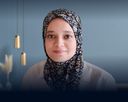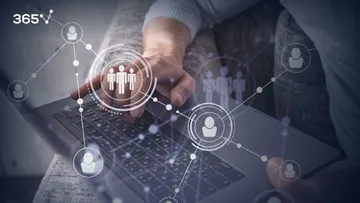It is often said that data science is a multidisciplinary field. Not only does it require good coding skills and an analytical mindset, but also domain expertise, which is what sets it apart from data analytics. Since data science has become an integral part of the success of nearly every industry, data scientists are required to have an understanding of the particular sphere they are working in. For example, a data specialist in the financial sector must be aware of the terminology used in the world of finance and be up to date on the latest developments.
In this article, we’ll explore the use of data science in healthcare, the types of data you might encounter, and the skills required to build a successful career as a data scientist in the medical field. We’ll explore some common applications and use cases and provide useful pointers for your next steps.
Table of Contents
- Introduction to the Healthcare Field
- Types of Data in Healthcare
- How to Become a Healthcare Data Scientist
- What Is the Role of a Healthcare Data Scientist?
- Applications of Data Science in Healthcare
- How to Become a Data Scientist in Healthcare: Next Steps
Introduction to the Healthcare Field
Healthcare involves improving and managing the processes of preventing, diagnosing, and treating different ailments both mental and physical. It is essentially an enormous umbrella term covering many concepts and branches. Healthcare is provided to patients by medical professionals including physicians, nurses, pharmacists etc. A typical health system involves people, organizations, and policies all working together to maintain the population's health.
Types of Data in Healthcare
Data is the building block of any information system and in healthcare the amounts of data generated every day are so vast that professionals often don't get the chance to manage and analyze it all. It's estimated that this industry alone represents around 30% of the world's total data volume and it's expected that the annual data growth rate might reach 36% by the year 2025. Data comes from a variety of sources such as health organizations, ministries, hospitals, clinics, and laboratories. These are the most common data types you may encounter when working in the field:
Claims data
This includes patients' insurance information and transaction records, usually collected by an organization's delivery system.
Electronic health records
This is probably the most common type of healthcare data. It contains all the patient’s information including demographic data, medical history, previous diagnoses, lab results, and current medications.
Disease registries
Doctors and other professionals often use disease registries to manage and track certain illnesses, especially chronic ones.
Clinical trials data
This type of type is very valuable, especially to researchers. It is collected in clinical trials and research studies and can be used to advance the field significantly.
Health surveys
As the name implies, this data results from health surveys that are conducted mainly by healthcare institutions for research purposes to track a certain disease or study a particular phenomenon.
How to Become a Healthcare Data Scientist?
To be a successful data scientist in the healthcare industry, you need to possess both technical and medical skills. Don’t fall into the trap of trying to learn everything at the same time. Take small steps and put in consistent effort by focusing on your most productive hours of the day. Let’s go through what you need to know to succeed in the field.
1. Medical knowledge
This includes but is not limited to
- Basic epidemiology which is simply the study and analysis of different diseases in populations.
- Pathology - a science that studies the causes and effects of diseases.
- Medical terminology. Just like in any field, there are certain terms used by all medical professionals to describe common processes, procedures, and conditions.
2. Programming language(s)
This can be Python or R. While Python is considered one of the top coding tools in the world, R is widely used in the field of bioinformatics and drug development.
3. Statistics
Studying statistics is an important skill in almost every domain while for data science specifically, statistics is a foundational building block. You don’t have to be a math guru but at least understand the key concepts and methods used to transform, analyze, and leverage the power of data. These are the main concepts to start with:
- Descriptive statistics
As the name implies, this branch of statistics is used to describe the main characteristics of data. It includes the calculation of mean, mode, and median.
- Inferential statistics
The second branch of statistics is concerned with analyzing random samples to draw conclusions about a population. This branch is divided into hypothesis testing and regression analysis.
- Variability
Variability includes parameters like range, standard deviation, and variance.
- Correlation
Correlation is a simple method used to measure the relationship between two variables. There are 2 types of correlation:
- Positive correlation, where a variable increases by the increase of the other variable. I.e. they move in the same direction.
- Negative correlation, where a variable increases by the decrease of the other variable or vice versa. I.e. they move in the opposite direction.
4. Machine learning
Although this is a complex and expansive field, many industries now are moving toward hiring people with machine learning skills to make the best use of data and drive significant business results. Machine learning is categorized into:
- Supervised learning
- Unsupervised learning
- Reinforcement learning
5. Other skills
The rest of the skills you might need are data visualization, storytelling, SQL, and Microsoft Excel, all of which you can master online.
What Is the Role of a Healthcare Data Scientist?
As a data scientist in a critical and sensitive field such as healthcare, you’ll be requested to perform a variety of tasks to ensure the best quality care for every patient. The tasks you’ll be asked to perform include:
- Working with different types of healthcare information starting from the collection process through cleaning and analyzing the data and finally presenting it in a proper format to gain insights.
- Being able to retrieve and store different data types safely so that they can be accessed at any time.
- Utilize available data to train and develop different machine learning models that can predict changes in medical conditions.
Applications of Data Science in Healthcare
There are many patient-centered applications of data science. The following are the most common ones:
- Predictive analytics
This type of analytics uses past and real-time data to project future patterns by training predictive algorithms. It is commonly used to make predictions about the onset of certain diseases so that proper care can be provided to the patient in due time.
- Monitoring health
Nowadays, there is a growing number of technology companies that compete in providing the best wearable health devices. A typical wearable device collects information on vital signs such as blood pressure, heart rate, oxygen level, etc. This is especially helpful for patients with cardiovascular problems and diabetes. The device can alert the patient in case there’s a problem and can also predict certain outcomes based on real-time data.
- Drug discovery
Since the drug trial process is very complex and costly, healthcare professionals can instead use machine learning algorithms to understand how certain drugs behave inside the human body.
- Medical imaging
Medical imaging is probably the most common use case of data science in the healthcare field. Scientists harness the power of AI and deep learning to improve the results of different imaging techniques where they can train advanced algorithms to identify tumors, fractures, and other anomalies. This helps them discover diseases before any deterioration happens.
How to Become a Data Scientist in Healthcare: Next Steps
If our introduction to the key applications of data science in healthcare has got you excited, you can now start mastering the analytics skills you need to make a real impact on people’s lives. From comprehensive introductions to Python and R to key considerations in Machine Learning, the 365 Data Science Program has everything you need to break into the field. Under the guidance of leading industry experts, you will learn by doing with a myriad of practical exercises and real-world business cases. If you want to see how the training works, start with a selection of free lessons by signing up below.





